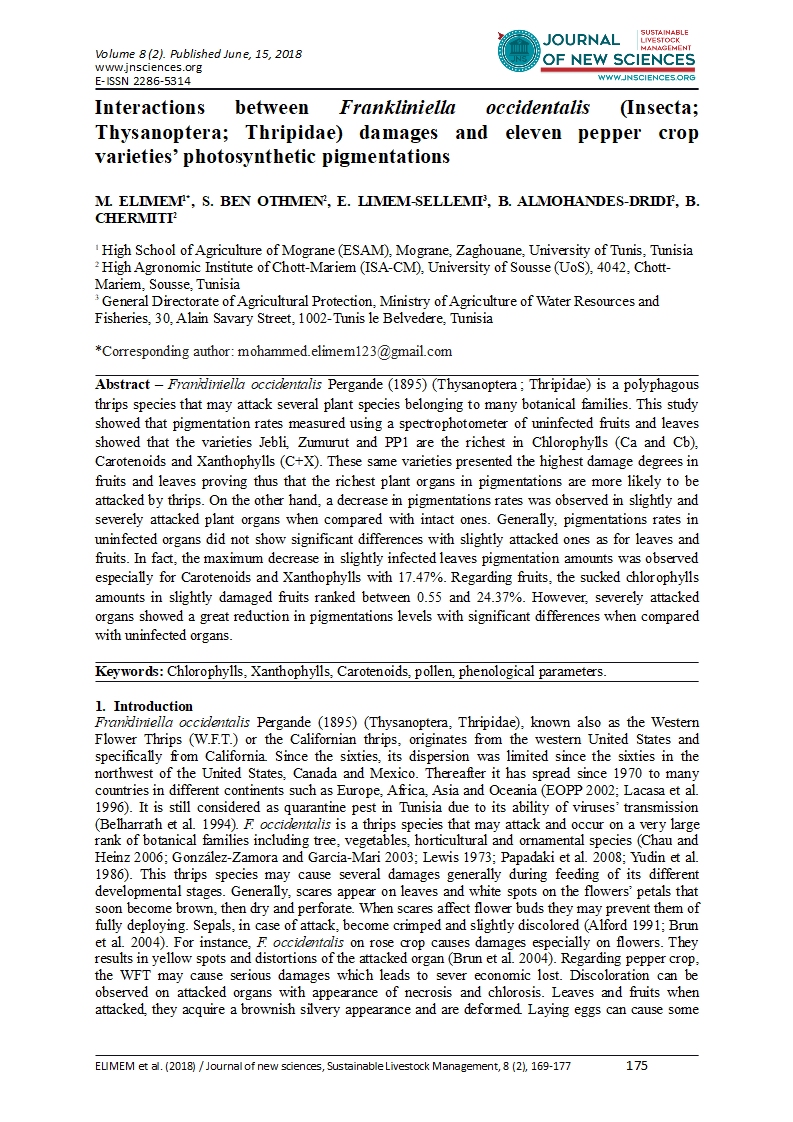- Category: Volume 8
- Hits: 6751
Interactions between Frankliniella occidentalis (Insecta; Thysanoptera; Thripidae) damages and eleven pepper crop varieties’ photosynthetic pigmentations

M. ELIMEM1*
S. BEN OTHMEN2
E. LIMEM-SELLEMI3
B. ALMOHANDES-DRIDI2
B. CHERMITI2
1 High School of Agriculture of Mograne (ESAM), Mograne, Zaghouane, University of Tunis, Tunisia
2 High Agronomic Institute of Chott-Mariem (ISA-CM), University of Sousse (UoS), 4042, Chott-Mariem, Sousse, Tunisia
3 General Directorate of Agricultural Protection, Ministry of Agriculture of Water Resources and Fisheries, 30, Alain Savary Street, 1002-Tunis le Belvedere, Tunisia
Abstract – Frankliniella occidentalis Pergande (1895) (Thysanoptera ; Thripidae) is a polyphagous thrips species that may attack several plant species belonging to many botanical families. This study showed that pigmentation rates measured using a spectrophotometer of uninfected fruits and leaves showed that the varieties Jebli, Zumurut and PP1 are the richest in Chlorophylls (Ca and Cb), Carotenoids and Xanthophylls (C+X). These same varieties presented the highest damage degrees in fruits and leaves proving thus that the richest plant organs in pigmentations are more likely to be attacked by thrips. On the other hand, a decrease in pigmentations rates was observed in slightly and severely attacked plant organs when compared with intact ones. Generally, pigmentations rates in uninfected organs did not show significant differences with slightly attacked ones as for leaves and fruits. In fact, the maximum decrease in slightly infected leaves pigmentation amounts was observed especially for Carotenoids and Xanthophylls with 17.47%. Regarding fruits, the sucked chlorophylls amounts in slightly damaged fruits ranked between 0.55 and 24.37%. However, severely attacked organs showed a great reduction in pigmentations levels with significant differences when compared with uninfected organs.
Keywords: Chlorophylls, Xanthophylls, Carotenoids, pollen, phenological parameters.

